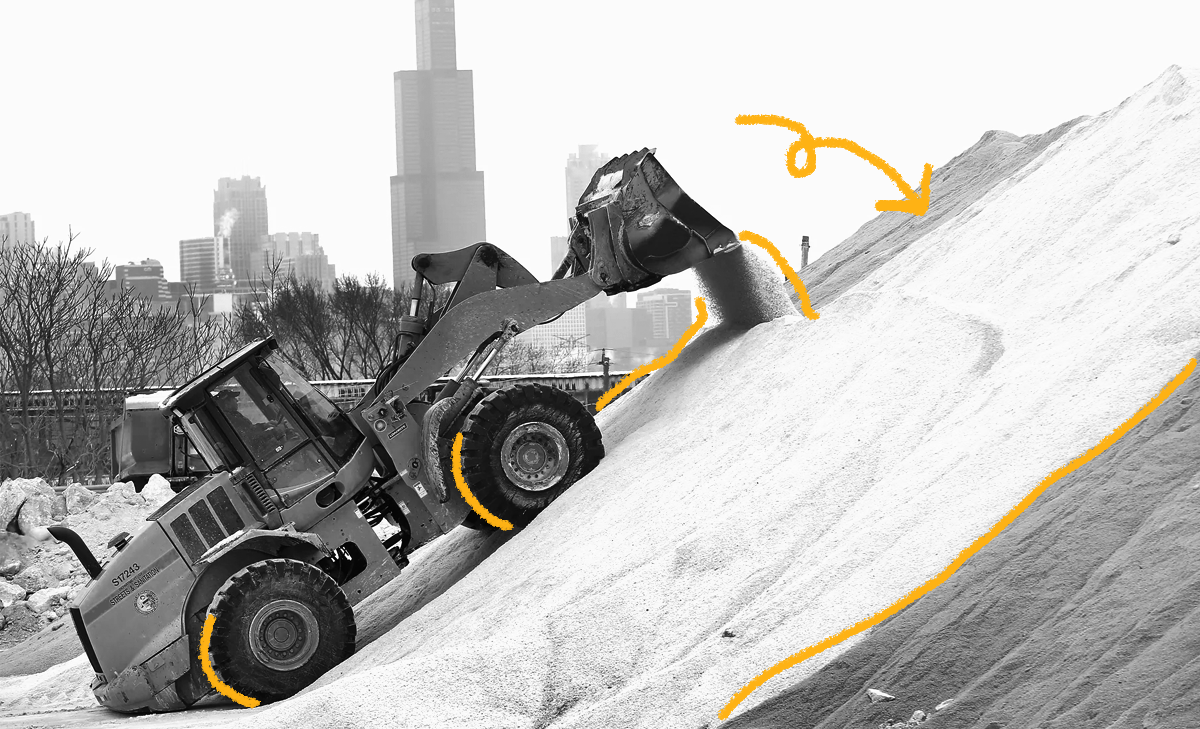Road salt prevents ice from forming on streets and sidewalks by lowering the freezing temperature of water. It’s most often made up of sodium chloride (harvested from deposits left over from prehistoric oceans in parts of the United States) mixed with other chemicals that aid in deicing roads in extremely cold temperatures. There are many benefits to using road salt – for example, road salt use can reduce car accidents by 87 percent during and after snowstorms. Road salt also allows traffic to keep moving and commerce to continue even during inclement weather, a benefit worth billions of dollars to the economy. In fact, to keep things running, the United States goes through 15 million tons of road salt each year.
However, there is a dark side to road salt use – it damages cars, trucks, concrete, and steel bridges. It also damages the environmental ecosystem when it washes into streams and rivers, where it kills off fish, plants, and amphibians. It also makes drinking water saltier if it gets into the municipal supply. In recent years, some states have been researching ways to use less road salt while still maintaining safety. Some tricks include salting roads before storms hit, adding beet juice to the mix (it helps the road salt stick better and can lessen the total amount required for use), and using different chemicals that are less likely to cause environmental concerns. The drawbacks of road salt use coupled with the salt shortages experienced in recent winters mean that Americans are ramping up the search for alternative ways to keep the roads safe in winter.



